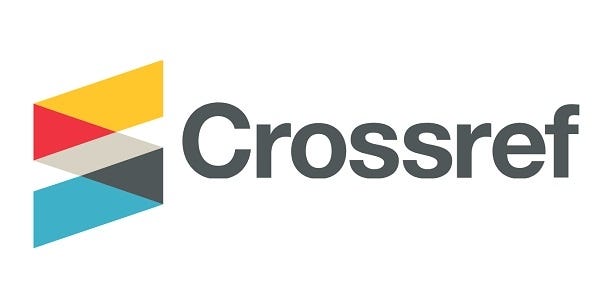Author Guidelines
Journal of Community Studies and Services (JComSS), Manuscripts reporting experimentation or research in field crops will be accepted for review as papers.
Guiding Principles
An acceptable manuscript will meet the following general criteria: it reports a worthwhile contribution to science, sound methodology was used and is explained with sufficient detail so that other capable scientists could repeat the experiments. Conclusions are supported by data, manuscripts is concise, well written, and understandable. The author must download and follow the instruction below : Template, Author Identity, Agreement Form
Manuscript Format
Manuscript should be uploaded to Journal of Community Studies and Services (JComSS),system and arranged in standard format, Title, Authors, Address and Email, Abstract, Keywords, Introduction, Materials and Methods, Result and Discussion, Conclusion, Acknowledgment and References. Typed at one side of white paper of A4 size, in single column, 1.0 space line, Book antiqua, size 11 and line spacing of 1 cm. Text is typed in the print area with margins from the top, bottom, left, right made 2.5 cm. A4 paper size, 8.27 inches wide, 11.69 inches high. Layout: 0.5-inch header, 0.5-inch footer. Text doesn't need to be numbered a page. Title (The Title Describes the Conducted Research, Book antiqua, Bolt. Font Size 16, Single Line Spacing, 0 pt after spacing)
(The title has to reflect the issue and focus of community service, subject of devotion, action and strategies, and the purpose of expected social changes)
Author’s Name1 (Book antiqua, size 10)
1Affiliation/Institution (Book antiqua, size 10) (The author should not include titles)
E-mail:
Abstract: The abstract is written in both English and Indonesian, providing a summary that includes the background, objectives, methods used, main results, and conclusions. The abstract should be concise, clear, and free of references, citations, or uncommon abbreviations. The length of the abstract should be between 150 and 200 words, using Cambria font size 10, single spacing, italicized, and written in a single paragraph.
Keywords: 3-6 words
- INTRODUCTION
The introduction includes the background, theoretical foundation, problems, problem-solving plans, and research objectives. The introduction is written using the letters Book antiqua, size 11, space 1, and line spacing of 1 cm. Text is typed in the print area with margins from the top, bottom, left, right made 2.5 cm. A4 paper size, 8.27 inches wide, 11.69 inches high. Layout: 0.5-inch header, 0.5-inch footer. Text doesn't need to be numbered a page. The entire introductory section is presented in an integrated manner in the form of paragraphs with a length of 15-20% of the total length of the article. (Aditya Dharma, 2019; R. N. K. Rambe, 2018).
- METHOD
The methods section describes the approach used to address partner problems and the stages in describing the solutions offered. Writing in the form of paragraphs with a length of 5-10% of the total length of the article.
The method of the activity contains a description of the process of planning community action (community organizing). In this case, it is explained who the subject of the service is, the place and location of the service, the involvement of the assisted subject in the process of planning and organizing the community, the research methods or strategies used in achieving the expected goals and the stages of community service activities.
- RESULT AND DISCUSSION
Result
Results are the main part of the scientific article, which contains: final results without data analysis processes, hypothesis testing results. Results can be presented with pictures, tables or graphs, to clarify the results orally.
Discussion
Discussion is the most important part of the overall content of a scientific article. The purpose of the discussion is: answering research problems, interpreting findings, integrating research findings into existing knowledge tools, and developing new theories or modifying existing ones.
The presentation of the Results and Discussion Chapters can also be done by referring to the systematics of 5W1H, namely What, When, Why, Who, Where, and How. Present this chapter well so that this community service activity can be really useful so that it can be used as a reference for similar activities by various other writers.
The content in this chapter should contain scientific theories related to the activities carried out. Scientific information is more emphasized than reporting the course of activities carried out (scientific articles are different from activity reports).
- CONCLUSION
Contains conclusions and suggestions. The conclusion contains the answers to the research question. Advice refers to the results of research and takes the form of practical actions, such as to whom and what the advice is intended for. Written in essay form, not numerical form.
- ACKNOWLEDGE
If any, thanks are addressed to official institutions or individuals who have provided funding or other contributions to this research. The thank you note is accompanied by the research contract number.
- REFERENCES
The bibliography consists of the author's name, year of publication, article title, name of city, and publishing institution. Bibliographies are sorted by the first letter of the author's name (A-Z). The second word in the name is agreed to be a surname. Author Citation is consistent with using the American Psychological Association (APA) 7th Edition standard, writing citations using Mendeley's reference manager application, writing examples: at the end of sentences (Sumarsono et al., 2018), and at the beginning of sentences (direct quotes) Yuliana et al. (2000).
All libraries referenced in the text must be written in the bibliography. The preferred bibliography is articles taken from the latest journals/publications no later than 5 years before the submission of the article (paper submission). Example of how to write a bibliography:
Scientific Articles From Reputable Journals :
Scabra, A. R., & Setyowati, D. N. (2019). Peningkatan Mutu Kualitas Air Untuk Pembudidaya Ikan Air Tawar di Desa Gegerung Kabupaten Lombok Barat. Jurnal Abdi Insani, 6(3), 261–269. https://doi.org/http://doi.org/10.29303/abdiinsani.v6i2.243
Book :
McKibbin, B. (2007). Deep economy: The wealth of communities and the durable future. New York: Times Books/Henry Hold and Co.
Translation Books :
Gonzales, R., P. (2018). Digital Image Processing (Pemrosesan Citra Digital), Vol. 1, Ed.2, diterjemahkan oleh Handayani, S. Yogyakarta (ID) : Andri Offset.
Proceedings of National/International Seminars:
Wyatt, J. C, Spiegelhalter, D. (2012). Field Trials of Medical Decision-Aids. : Potential Problems and Solutions. Proceeding of 15th Symposium on Applications IT-Medical. Washington, May 3.
Thesis/Thesis/Dissertation:
Scabra, A.R. (2015). Kinerja produksi ikan sidat Anguilla bicolor bicolor berukuran awal 10 g/ekor pada media budidaya dengan salinitas dan kalsium karbonat (CaCo3) yang berbeda [tesis]. Bogor (ID): Institut Pertanian Bogor.
Research Report :
Ivan, A.H. (2005). Pendampingan ekonomi masyarakat kawasan hutan lindung, Laporan Penelitian Hibah Bersaing,Proyek Multitahun. Jakarta (ID) : Kemenristek-Dikti.
State Law of the Republic of Indonesia:
Indonesia. Undang-Undang Nomor 15 Tahun 2006 tentang Badan Pemeriksa Keuangan. Lembaran Negara RI Tahun 2009 Nomor 112, Tambahan Lembaran RI Nomor 5038. Sekretariat Negara. Jakarta.
Indonesia. Undang-Undang Nomor 17 Tahun 2003 tentang Keuangan Negara. Lembaran Negara RI Tahun 2003 Nomor 47, Tambahan Lembaran RI Nomor 4286. Sekretariat Negara. Jakarta.
Government Regulations :
Mahkamah Konstitusi. 2010. Putusan Mahkamah Konstitusi RI Nomor 209-210/PHPU.D-VIII/2010. Jakarta.
Indonesia. 2005. Peraturan Pemerintah Republik Indonesia Nomor 19 Tahun 2005 Standar Nasional Pendidikan. Lembaran Negara Republik Indonesia Tahun 2005 Nomor 41. Jakarta.
Departemen Pekerjaan Umum. 1997. Tata Cara Perencanaan Geometrik Jalan Antar Kota, No. 038/T/BM/1997. Direktorat Jenderal Bina Marga. Jakarta.
Internet Sources :
U.S. Census Bureau. (2000). State and Country QuickFacts. Washington, D.C.: United States Bureau of the Census. Retrieved November 7, 2008, from http://quickfacts.census.gov/qfd/
Additional Details:
Manuscript proportions
The manuscript contains at least 3,000 words.
The content of the manuscript consists of:
Introduction (15-20%) or 1.5 to 2 pages of total Manuscripts;
Method (5-10%) or 0.5 to 1 page of total Manuscripts;
Results and Discussion (60-70%) or 6 to 7 pages of the total Manuscript;
Conclusions (5-10%) or 0.5 to 1 page of the total Manuscripts.
Style Squirting
The reference emulsion style in this journal uses Mendeley with APA Style.
Term Writing
Foreign terms used in the manuscript are written in italic style, for example, the words research, distribution, management and system, and so on.
Article Type
Articles are original articles that are the result of research or the results of previous articles. Articles can be written in Indonesian or English. The number of article pages between 10 - 12 pages includes the bibliography. The systematics of writing research articles consist of titles, authors' names, institutions and correspondence addresses, abstracts, keywords, introductions, methods, results and discussions, conclusions and suggestions, acknowledgments and bibliography. (Aditya Dharma, 2019; R. N. K. Rambe, 2018). The systematics of writing a conceptual article (containing the results of the study) consists of title, author's name, institution and address of correspondence, abstract, keywords, abstract, keywords, introduction, core section, summary and bibliography.
The title of the article is written using Book antiqua letters size 16, capital, bold, Right Aligned, consists of a maximum of 15 words and describes the content of the manuscript. The author's name is written using Book antiqua letters size 10 without a title, the first name is abbreviated while the last name (surname) is not abbreviated. Manuscripts are presented narratively (without numbering in front of subheadings) and presentation in the form of subheadings is avoided. Formulas are written separately not inside the sentence and are numbered on the right. The formula is written using Microsoft equations.
(1)
The image is inserted into the text box and the image title is placed below the image. The title of the image is numbered and the image must be referenced in the text. Titles begin with capital letters. Image titles with more than one line written with a space of 1. The image is drawn with a line width of 1pt and must have good contrast quality.
Figure 1.
Tables are created with a row width of 1pt and table titles are placed on top of the table. Information on a table consisting of more than 2 rows is written at a distance of 1 row. Table rows are horizontal lines only, while vertical lines are omitted. Example of how to write Table 1.
|
Tabel. 1 Descriptive Statistics |
||||
|
No |
Minimum |
Maximum |
Mean |
Std. Deviation |
|
|
|
|
|
|
|
|
|
|
|
|
|
|
|
|
|
|







